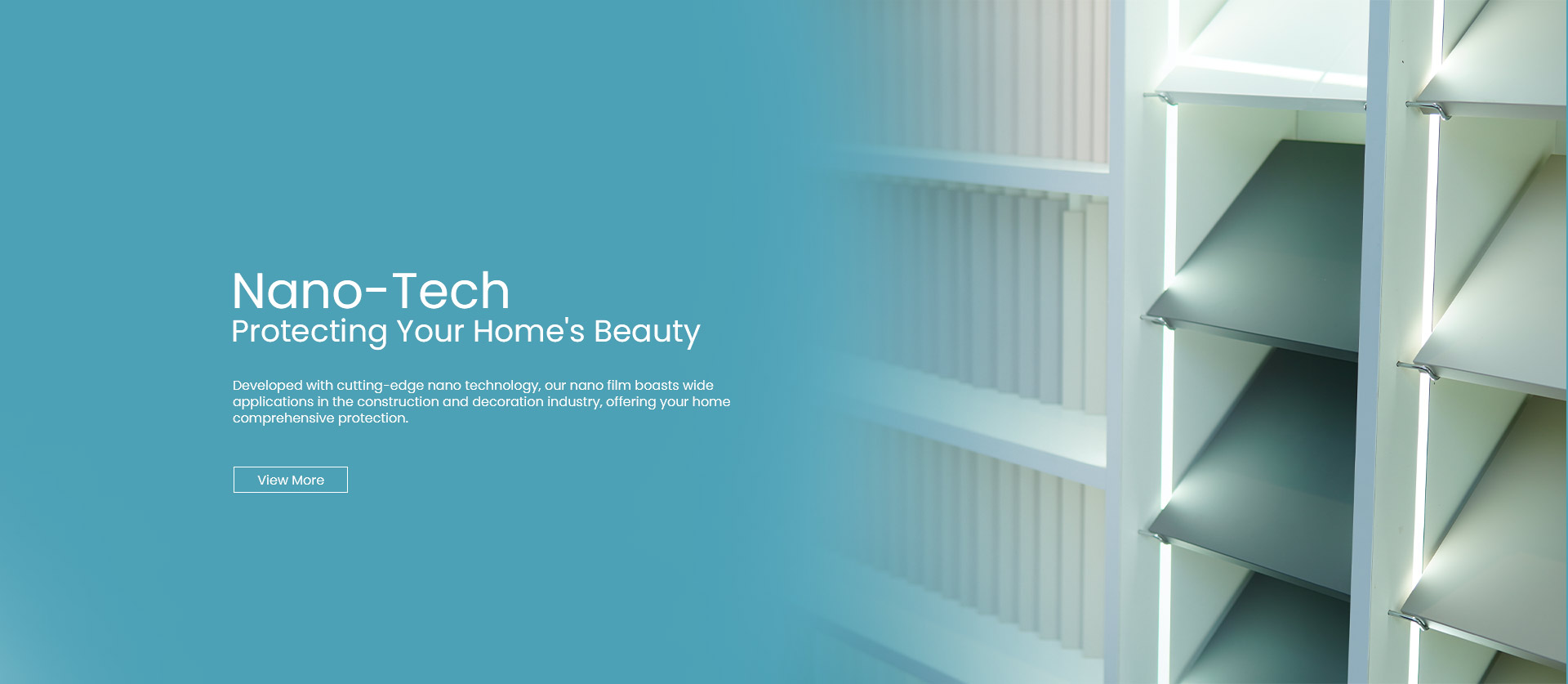What makes Nami-film a new type of material, and what are its advantages compared to traditional materials?
The advent of nanofilm technology marks a paradigm shift in the world of decorative materials, transcending the shortcomings associated with traditional options. nanofilms, characterized by their non-toxic, odorless, non-polluting, stain-resistant, abrasion-resistant, scratch-resistant, anti-aging, and highly flexible properties, not only redefine the standards of eco-friendliness but also provide a foundation for user health and safety. This article explores the innovative aspects of nanofilms and elucidates their distinct advantages over traditional materials.
1. Toxicity-Free Innovation:
nanofilms break free from the toxicity constraints of conventional decorative materials. Their formulation and application techniques ensure a completely non-toxic environment, eliminating the health risks associated with volatile organic compounds (VOCs) often found in traditional coatings.
2. Odorless Elegance:
Unlike traditional materials that may emit unpleasant odors during installation or use, nanofilms offer an odorless alternative. This feature not only enhances user comfort but also aligns with modern preferences for clean and fragrance-free living spaces.
3. Pollution-Free Applications:
The production and application of nanofilms adhere to strict environmental standards, resulting in a pollution-free process. Traditional materials, such as certain paints and coatings, may contribute to air and water pollution during manufacturing and disposal, making nanofilms a greener and more sustainable choice.
4. Stain and Wear Resistance:
Nanofilms showcase exceptional resistance to dirt, stains, and wear. This advantage significantly reduces the need for frequent cleaning and maintenance, providing a durable and long-lasting solution for surfaces in various applications, from furniture to interior finishes.
5. Scratch Resistance and Anti-Aging Properties:
The inherent scratch resistance of nanofilms surpasses that of traditional materials, maintaining a pristine appearance even in high-traffic areas. Additionally, their anti-aging properties ensure a prolonged lifespan, mitigating the need for premature replacements seen with certain aging-prone materials.
6. Extended Lifespan:
Nanofilms contribute to a sustainable lifestyle by offering an extended product lifespan. Unlike traditional materials that may degrade over time, nanofilms exhibit resilience to environmental factors, ensuring a longer duration of use and reducing the frequency of replacements.
7. High Flexibility:
One of the distinguishing features of nanofilms lies in their remarkable flexibility. This characteristic allows them to adapt seamlessly to various surfaces, including irregular shapes and contours, providing a versatile and aesthetically pleasing solution for diverse architectural applications.
8. Innovative Application Techniques:
Nanofilm technology introduces innovative application techniques, such as precise printing and embossing, enabling intricate designs and textures that were challenging to achieve with traditional methods. This innovation opens up new possibilities for creative expression in interior and exterior decor.
Nanofilms represent a revolutionary leap in decorative materials, setting new standards for environmental sustainability, user health, and safety. Their non-toxic nature, odorless application, pollution-free manufacturing, and a host of other advantages over traditional materials position nanofilms as a forefront choice in the quest for modern, eco-friendly, and visually appealing surfaces. As the demand for sustainable solutions continues to rise, nanofilm technology emerges as a beacon of progress in the realm of interior and exterior design.
Previous: What is Nami-film?


